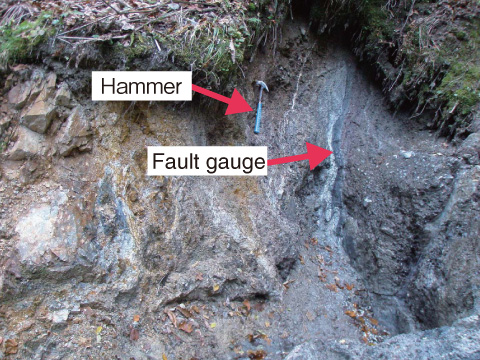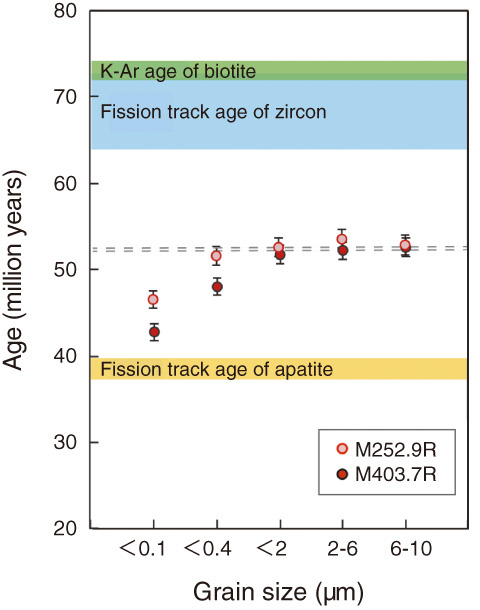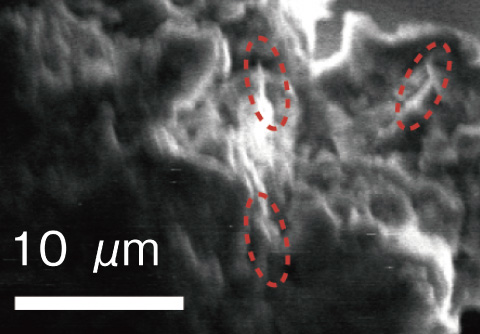
Fig.3-14 Outcrop of fault gauge (Sakai Toge fault, Nagano prefecture)

Fig.3-15 Age trend of sample from fault gauge in Toki granite

Fig.3-16 SEM image of sample M403.7R from fault gauge in Toki granite
The activity of faults around a target locality is evaluated to assess the safety for geological disposal and it is important to determine the period of fault activity for specific faults. Although the period of fault activity is generally determined by the stratigraphy of dated formations, dating methods for fault derived material are also developed for inapplicable cases, e.g., when no sedimentary rocks are distributed in the locality or when a fault is found in the tunnel.
Fault-derived material is generated by violent friction between rocks in contact as a fault moving. A fault gauge is a type of fault-derived material (Fig.3-14). Authigenic clay minerals formed by alteration are contained in the fault gauge. Methods of separating specific minerals and evaluating the obtained age are developed to date the authigenic clay minerals in the fault gauge, because the age of these minerals defines the end of fault activity. Illite, a clay mineral, can be dated by K-Ar dating, which is scaled to the decay of potassium-40 to argon-40.
Methods evaluating the authigenic illite age in sedimentary rocks are developed. Finer-grained samples reportedly show younger ages. The application of illite dating to illite in the fault gauge is under development. The low-temperature structure illite is assumed to be authigenic in the evaluation method of sedimentary illite age. Another evaluation method proposes scanning electron microscopy (SEM) observation of illite crystals in collected illite samples because illite crystals form needles in rapid growth during brief thermal activity after a fault moves, whereas they form sheets in slow growth during diagenesis of sedimentary rocks.
Two samples were collected from the main pit of Mizunami Underground Research Laboratory, which penetrates the Toki granite. They showed younger ages for finer grain fractions (Fig.3-15). SEM observation of the samples revealed needle illite formed after the fault activity (Fig.3-16). High-temperature structure crystals were also detected in the samples, although the faults were in the granite host rock. This indicates a problem with determining alteration after fault movement; the alteration generates not only low-temperature crystals but also high-temperature crystals. We will study the illite geochronology for presupposition of the dating method and methods of sample preparation and observation.